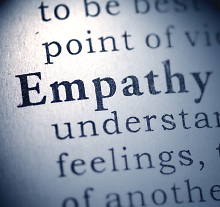Journal Digest
Patients With Severe Depression May Benefit Equally From CBT, Antidepressants

Previous studies have shown psychotherapies, in particular cognitive-behavioral therapy (CBT), to be just as effective as pharmacotherapies in treating mild to moderate symptoms of depression. But less is known about the relative effectiveness of psychotherapy compared with pharmacotherapy in populations with severe depression. Current guidelines recommend the use of antidepressant medications for the treatment of severe depression in the context of major depressive disorder. Now, a recent meta-analysis published in JAMA Psychiatry suggests that only a modest difference is seen in the effectiveness between the two therapies among patients who are severely depressed.
Researchers from the VU University Amsterdam analyzed primary data submitted by the authors of 16 randomized, controlled trials in which CBT was compared with pharmacotherapy among outpatients with a primary diagnosis of a depressive disorder (major depressive disorder or dysthymia). Main outcome measures included improvements in scores on the 17-item Hamilton Rating Scale for Depression (HAM-D) and Beck Depression Inventory (BDI), as well as the rates of response and remission.
Based on their analysis, the researchers identified a modest (less than 1 point) main effect of antidepressant pharmacotherapy over CBT on the HAM-D and a nonsignificant trend on the BDI, but no significant differences in rates of response (defined as 50 percent reduction in scores on post-test HAM-D) or remission. Additional analysis indicated that baseline depression severity does not moderate reductions in depressive symptoms between CBT and antidepressant medications.
The authors wrote that while their analysis “shows that pharmacotherapy provides minor improvement in the treatment of depression relative to CBT in terms of the continuous measures, there is no indication that differences between the modalities were moderated by the degree of baseline depression severity. Therefore, the data are insufficient to recommend [antidepressant medications] over CBT in outpatients based on baseline severity alone.” They added, “More research is needed to examine whether other demographic and clinical characteristics moderate the differential response between CBT and [antidepressant medications].”
Weitz E, Hollon S, Twisk J, et al. Baseline Depression Severity as Moderator of Depression Outcomes Between Cognitive Behavioral Therapy vs Pharmacotherapy: An Individual Patient Data Meta-analysis. JAMA Psychiatry. September 23, 2015. [Epub ahead of print]
Choice of Youth Alcohol Brands Linked to Alcohol Ads

Exposure to specific alcohol advertising plays a major role in what brand youth use to engage in illegal use of alcohol, according to a recent study published in the American Journal of Drug and Alcohol Abuse.
Researchers from the Johns Hopkins School of Public Health and Boston University School of Public Health evaluated the impact of brand-specific alcohol advertising in national magazines and television programs on 30-day consumption prevalence of that brand in approximately 1,000 youth aged 13 to 20 between December 2011 and May 2012.
Youth were 36 percent more likely to consume brands of alcohol that were advertised in national magazines and five times more likely to consume brands of alcohol advertised on television.
The study authors hope that the findings will eventually lead to policies similar to those that limited alcohol advertising four decades ago.
“It was [once] controversial to say that a relationship between cigarette marketing and youth cigarette consumption existed,” said lead study author Michael Siegel, M.D., M.P.H., a professor of community health sciences at the Boston University School of Public Health. “Once the relationship between cigarette ads and the brands that youth were smoking was established, significant policy shifts occurred as state and federal policymakers took the issue of advertising exposure to youth much more seriously.”
Siegel M, Ross C, Albers A, et al. The Relationship Between Exposure to Brand-Specific Alcohol Advertising and Brand-Specific Consumption Among Underage Drinkers - United States, 2011-2012. Am J Drug Alcohol Abuse. October 19, 2015. [Epub ahead of print]
Cardiovascular Disease, Cancer Top Causes of Death in Schizophrenia Patients

A study published last month in JAMA Psychiatry reported that adults with schizophrenia die at 3.5 times the rate of that of the general U.S. population. While this increased risk of mortality was distributed across multiple diseases, it was particularly elevated for cardiovascular disease, diabetes mellitus, and suicide.
The purpose of the study was to examine the specific causes of deaths among Medicaid patients—aged 20 to 64—who died between January 1, 2001, and December 31, 2007. Mortality data were extracted by the U.S. Compressed Mortality File.
The results showed that natural causes accounted for 55,741 of deaths in schizophrenia patients, with cardiovascular disease having the highest mortality rate at 403.2 per 100,000 person-years, accounting for almost one-third of all natural deaths. Cancer had the second highest mortality rate (200.5 per 100,000 person-years), with lung cancer being the most prevalent cause of death by cancer at 74.8 per 100,000 person-years. Chronic obstructive pulmonary disease (89.5 per 100,000 person-years) and diabetes (61.8 per 100,000 person-years) were other leading causes of natural deaths among study participants with schizophrenia.
Unnatural causes of death accounted for 9,812 deaths, with accidents and suicide being the leading causes, with mortality rates of 199.7 per 100,000 persons-years and 52 per 100,000 persons-years, respectively.
“The excess of cardiovascular deaths further supports initiatives aimed at improving … medical and behavioral interventions, including more consistent management of diabetes mellitus, hypertension, dyslipidemia, and other cardiovascular risk factors,” noted the researchers. They concluded that based on the study’s findings, aggressive identification and management of cardiovascular and cancer risk factors, including tobacco smoking, should be leading priorities in the medical care of adults with schizophrenia.
Olfson M, Gerhard T, Huang C, et al. “Premature Mortality Among Adults With Schizophrenia in the United States.” JAMA Psychiatry. October 28, 2015. [Epub ahead of print]
Youth Perceive Empathy and Competence of Psychiatrists Based on Clinician’s Name

Although Dr. Doe, Dr. John, and John are the same person, the title that psychiatrists choose to use when introducing themselves to young patients could influence how their levels of competence and empathy are perceived by patients, according to a study presented at the 2015 Annual Meeting of the American Academy of Child and Adolescent Psychiatry.
Researchers from the Children’s Hospital of University of Buffalo Psychiatric Clinic randomly assigned 54 young patients one of three vignettes in which psychiatrists introduced themselves with the title of “doctor” with their last name or first name, or without the title of “doctor” using their first name only (“Dr. Jones,” “Dr. Bob,” or “Bob”). Patients were asked to rate the psychiatrists’ ability to be empathetic (based on the Jefferson Scale of Patient Perception of Physician Empathy) as well as the psychiatrists’ competence (based on the Medical Interview Satisfaction Survey).
Results showed that “Dr. Bob” was significantly perceived to be more empathetic than “Dr. Jones” and “Bob.” “Dr. Jones” was significantly perceived to be more empathetic than “Bob.” “Dr. Bob” was also significantly perceived by patients to be more competent than “Bob.” No significant difference was observed in patient-perceived competence between “Dr. Bob” and “Dr. Jones.”
The researchers mentioned that child and adolescent psychiatrists, especially those in training, may consider using the title “Doctor” followed by their first name in addressing a child and their parent since this particular title had a higher association with perceived empathy and competence by patients.
On the basis of their findings, the researchers recommencded that child psychiatrists should also consider asking the child and their parents on their comfort levels of addressing psychiatrists in a particular manner, which could improve the therapeutic alliance. ■
DiGiacomo M, Cogswell A, and Pierre-Louis, M. What’s in a Name? 2015 AACAP Annual Meeting.



